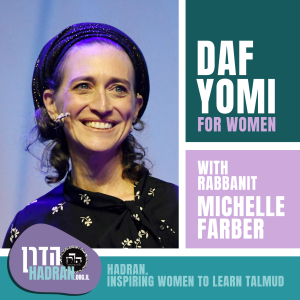
Study Guide Yevamot 20
Presentation in PDF format
Rav Menashe raises a question on the reason for the rabbis' opinion regarding a brother who was born after the husband died. The Gemara then raises a similar type question on the reason for Rabbi Shimon's opinion. Both questions are resolved. The Mishna brings different categories or situations of a woman who can be in a forbidden relationship with her yabam. In some, there is no chalitza or yibum as the woman is exempt (as was learned in previous Mishnas). If it is isur mitzva or isur kedusha, they do chalitza. Isur mitzva is relationships that were forbidden by rabbinic law. Isur kedusha is ones that are only a negative transgression (lav), not one punishable by karet or by death in court. If two sisters fall to yibum to a brother, and one is forbidden to the brother, the other can do yibum or chalitza. An inference is made from wording in the Mishna (different versions are brought). Which type of forbidden relationship does the sister case relate to? Isur mitzva and isur kedusha are defined in an opposite manner by Rabbi Yehuda. The Gemara explains the reasoning behind each one's explanation. One of the cases mentioned in the Mishna is a widow to a high priest. As it doesn't specify in the Mishna, the Gemara assumes it refers to a case of yibum, even if she was just engaged and not married to his brother. This raises a question - why doesn't the positive commandment of yibum override the negative commandment of a high priest to marry a widow? Five answers are brought to this question and questions are raised against each answer. According to some of the answers, it is by Torah law; according to others, it is a rabbinic decree.
More Episodes
 2023-08-24
2023-08-24
 2023-08-23
2023-08-23
 2023-08-22
2023-08-22
 2023-08-21
2023-08-21
 2023-08-20
2023-08-20
 2023-08-18
2023-08-18
 2023-08-16
2023-08-16
 2023-08-15
2023-08-15
 2023-08-13
2023-08-13
 2023-08-11
2023-08-11
 2023-08-11
2023-08-11
 2023-08-10
2023-08-10
 2023-08-09
2023-08-09
 2023-08-08
2023-08-08
 2023-08-07
2023-08-07
 2023-08-06
2023-08-06
Create your
podcast in
minutes
- Full-featured podcast site
- Unlimited storage and bandwidth
- Comprehensive podcast stats
- Distribute to Apple Podcasts, Spotify, and more
- Make money with your podcast
It is Free
- Privacy Policy
- Cookie Policy
- Terms of Use
- Consent Preferences
- Copyright © 2015-2024 Podbean.com





